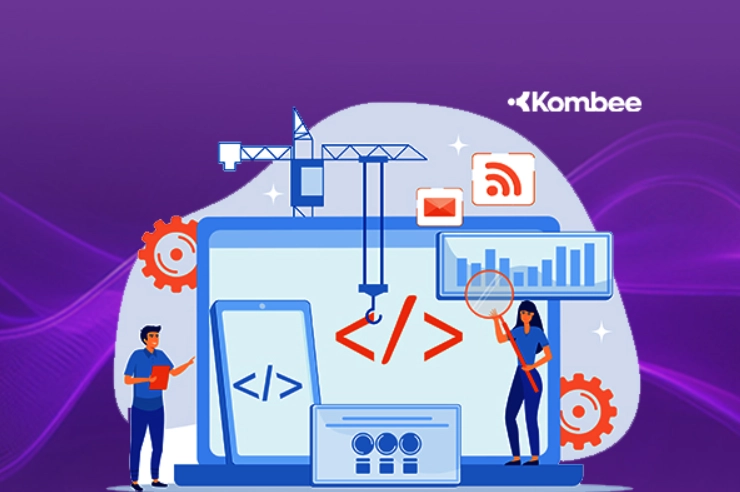Introduction
Scaling technology teams quickly is one of the largest challenges for businesses primarily due to talent gaps, time-consuming hiring processes and also rising costs. Slow hiring can lead to missed timelines, delayed projects and lost business. Traditional hiring can't match the pace of innovation and that’s where IT staff augmentation offers a flexible, cost-effective way to quickly access skilled talent without long-term commitments.
Whether you're gearing up for a product launch or scaling your team, this strategy keeps you agile as well as effective and prepared to achieve your objectives.
In this blog, we are going to discuss why staff augmentation is instrumental in fast scaling.
What is IT Staff Augmentation?
IT staff augmentation is an effective staffing strategy whereby companies cover short-term project or skill gaps through outside IT personnel who temporarily augment the internal teams. Augmented staff is integrated with in-house teams, fully immersed within the process but still overseen by the organization. It's a flexible solution which allows companies to respond to mounting demand for highly specialized skill sets without the time and cost of traditional hiring.
As opposed to outsourcing with outside vendors performing complete functions, staff augmentation allows you to maintain control while being able to very quickly add expertise to your staff.
IT Staff Augmentation Benefits You Can't Overlook
When you hire an IT staff augmentation company, you have access to a multitude of advantages that traditional hiring systems simply can't offer:
- Expert Access Instantly: No more searching for months. Staff augmentation connects you with an international pool of specialists in areas like cybersecurity, as well as AI and DevOps, only when you need them.
- Grow As You Go and When You Need To: Got a little extra work to do on a short-term project? Or downsizing after a big roll-out? Staff augmentation gives you the flexibility to manage your workforce size on demand without long-term commitment, avoiding the disadvantages of full-time staff.
- Quick Turnaround: With seasoned experts coming on board instantly, you avoid learning time, hit the ground running immediately and accelerate your projects.
- Cost-Effective Scaling: Why pay for office space, benefits or training when you only pay for skills you need? IT staff augmentation helps you stretch your budget further without ever sacrificing quality.
- Stay in Control: Unlike outsourcing, your augmented staff integrates seamlessly with your team, enabling you to retain control over quality, processes and timelines.
Ready to scale faster without sacrificing quality? Kombee connects you with vetted tech experts exactly when you need them. Get started today.
IT Managed Services vs. Staff Augmentation: What's the Difference?

You might ask yourself how IT managed services vs. staff augmentation differ. Both options help businesses scale their staff, but they are deployed for distinct reasons. The table below illustrates those distinctions more clearly.
When Is IT Staff Augmentation the Right Solution?
There are numerous situations in which IT staff augmentation is the right solution:
- Urgent Product Deadlines: If you have a looming launch with tight deadlines, staff augmentation allows you to meet deadlines without sacrificing quality.
- Lack of In-House Expertise: If your in-house talent pool lacks specific skills like cloud architecture or machine learning, augmentation provides temporary access to experts.
- Team Overload: When your team is over-allocated, then augmentation adds bandwidth to avoid burnout and ensure productivity.
- Startups with Limited Budgets: For startups that must scale fast but lack the budget to bring in full-time employees, staff augmentation provides a flexible and cost-effective solution.
Whether you're racing toward a product launch or plugging critical skill gaps, Kombee’s IT staff augmentation services help you scale with confidence.
How to Make IT Staff Augmentation Work
To maximise the IT staff augmentation benefits, it's necessary to adopt a strategic process:
- Choose the Right Partner: Choose an IT staff augmentation company with a solid track record and that can provide the skills you need.
- Have Clear Expectations: Set clear goals, as well as tasks and performance measures, to ensure alignment.
- Mix Augmented Staff Seamlessly: Treat augmented staff like core staff members and include them in meetings, give them the proper tools and encourage collaboration.
- Maintain Communication Channels Open: Open lines of communication and ongoing feedback assist in keeping all in sync and preventing miscommunication.
A 7-Step IT Staffing Strategy That Works
If you are serious about technical staffing, follow this map:
- Set the Destination: Define your business goals and project objectives so that each hire moves you nearer to them.
- Audit Your Bench: Take a close look at your current team's strengths and determine skill gaps that would impair delivery.
- Pinpoint the Role: Be specific about the technical skills as well as certifications and experience required for each role.
- Select the Right Model: Map your needs to the appropriate IT staffing model like short-term, long-term, hybrid or managed services.
- Craft a Clear Brief: Develop job descriptions that outline hard skills and the soft skills to thrive in your culture.
- Assess with Purpose: Use structured interviews, technical testing and agency scoring to ensure a perfect fit.
- Integrate and Elevate: Onboard effectively, train and monitor performance to sustain talent engagement and productivity.
By walking through these steps IT staffing is turned from a reactive scramble into a strategic advantage.
IT Staffing Trends in 2025 You Can't Afford to Ignore
The IT talent marketplace is transforming. To stay competitive here are the shifts you need to have on your radar:
- Remote-First by Default: Borders are no longer boundaries. Your best candidate for the job could be five miles down the street… or five time zones.
- Fractional Tech Leadership: Need a CTO or solution architect but not full-time? Businesses are hiring part-time experts for high-level guidance without long-term commitments.
- AI in Recruitment: Intelligent algorithms are now screening, matching and even pre-evaluating applicants in record time.
- Soft Skills Take Center Stage: In a remote collaboration world, adaptability, communication and teamwork are as vital as credentials.
- Platform-Based Staffing: Web-based platforms are transforming IT hiring into an on-demand service, connecting you with project-ready talent in a matter of hours.
The moral? Technical staffing is no longer merely about filling a role but how as well as where and when you tap into the talent that drives your business forward.
Conclusion
Scaling your tech talent quickly means being agile as well as fast and highly skilled.
You might not have the luxury of traditional hiring or even outsourcing. The choices you make today will dictate how much you can react and innovate in a competitive economy. Are you simply reacting to hiring needs or tactically building a talent pipeline to get in front of the competition? That's where Kombee comes in. We help you synchronize your staffing plan as well as recruit top-performing staff in record time and utilize IT staff augmentation to drive responsiveness and capacity to meet project timelines. We can assist you in scaling smarter and competing in this fast-paced tech landscape.
Frequently Asked Questions
1. What are the benefits of IT staff augmentation over traditional hiring?
Staff augmentation offers faster onboarding, access to specialized skills, flexibility in scaling, and lower overhead compared to the lengthy, costly process of traditional hiring.
2. How does staff augmentation help scale development teams faster?
It allows you to quickly bring in vetted professionals with the right expertise, bypassing long recruitment cycles and enabling rapid team expansion based on project needs.
3. Is staff augmentation cost-effective for startups and growing businesses?
Yes, it reduces hiring, training, and infrastructure costs, making it ideal for startups needing agility, speed, and access to talent without long-term financial commitments.






